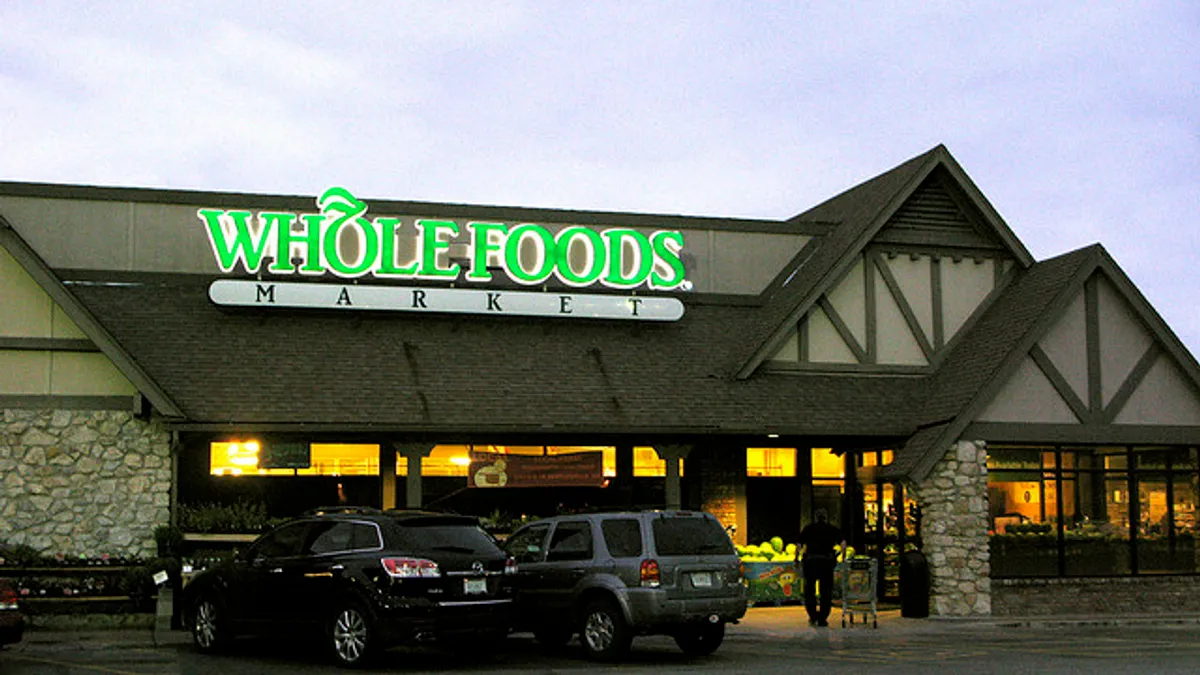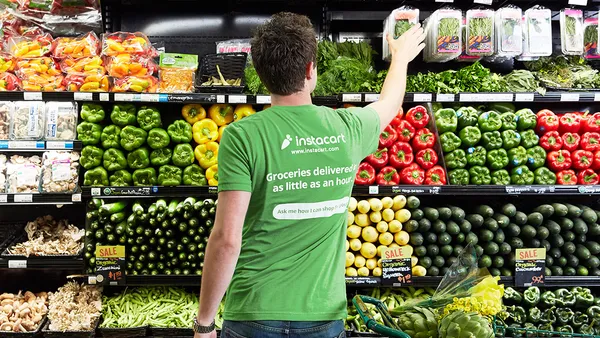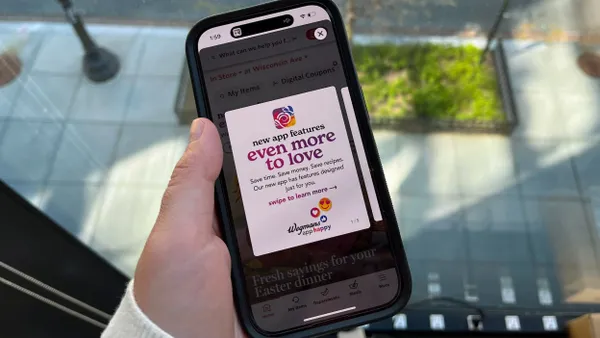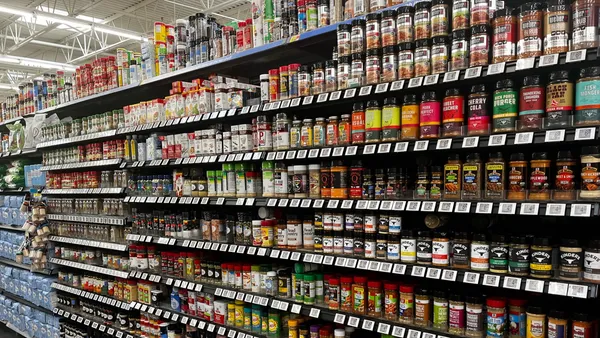Dive Brief:
- Whole Foods announced Wednesday its launch of curbside pickup for online grocery orders. The service, available only to Amazon Prime members through the Prime Now app, is free for orders of more than $35 collected in an hour or more. Customers can elect to have their order ready in 30 minutes for a $4.99 fee.
- The new service is now available in Sacramento, California and Virginia Beach, Virginia, with plans to launch additional locations throughout the year. The service is available every day from 8 a.m. to 10 p.m.
- The Prime Now app lets customers notify Whole Foods when they are coming to pick up their groceries. Prime Now customers will have dedicated parking spaces where they can wait for an employee to bring the order to their car.
Dive Insight:
Amazon’s rollout of its click-and-collect grocery program joins other big name retailers who already provide this service — but the new initiative could prove to be successful if it's launched in the right locations.
Whole Foods operates a healthy mix of urban and suburban stores, and the latter seems to be the most promising avenue for store pickup as more customers have cars and tend to plan grocery trips ahead of time. Sacramento and Virginia Beach will offer a window into demand from customers on both coasts that should inform Whole Foods' wider rollout of the service.
Competitors have gotten a head start on Whole Foods. Kroger has more than 1,000 stores that offer its ClickList service, while Walmart plans to offer free pickup from more than half its stores by the end of this year. Whole Foods has some catching up to do, but that shouldn't be a detriment during the long run as Amazon's vast resources and ability to innovate rapidly will put increasing pressure on the competition.
This new store pickup program adds to Amazon’s growing list of Prime integrations, which includes free two-hour grocery delivery, everyday discounts and a cash-back credit card. The strategy is twofold: Drive Prime customers to Whole Foods, and use the grocer to boost Prime signups. So far, the strategy is working — at least on the Whole Foods side, with store traffic up 3% since Amazon's takeover, according to The Wall Street Journal.
Combined with its rapidly expanding home delivery service, Whole Foods aims to capture an increasing number of customers moving their grocery shopping online. A new report from Brick Meets Click finds that online orders now make up 5.5% of U.S. supermarket sales, while the Food Marketing Institute and Nielsen estimate that grocery e-commerce will become a $100 billion market in as little as four years.
Under Amazon's influence, Whole Foods seems to be transforming into an everyday shopping destination. Its marketing is more price-focused, and the company has streamlined its operations to focus on mainstream and scalable brands. These changes should continue to drive customers into stores, but will they take a toll on the Whole Foods brand? That's a key question long-term for a supermarket chain that's still beloved by many shoppers.













